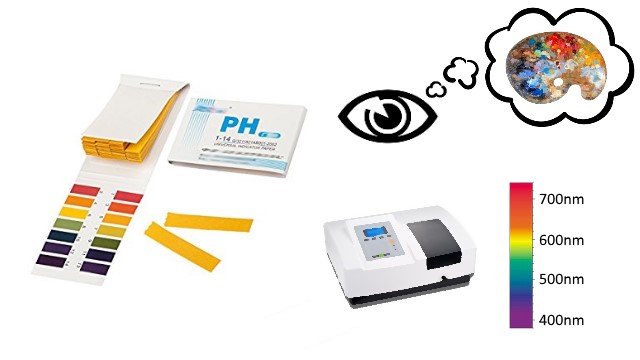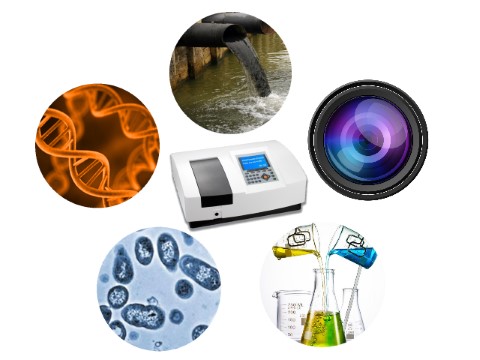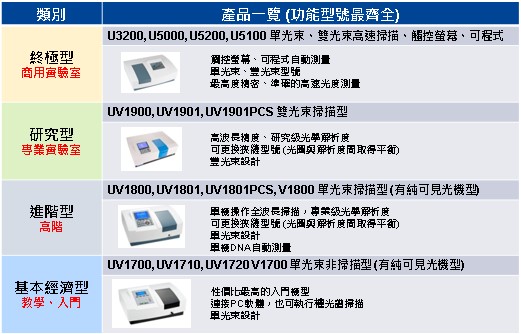Understanding Spectrophotometer (2) Function & Application
Via the specific chemical process design, we can drop some color reagent into the sample solution which we're going to analyze. And then, use a spectrophotometer to measure the color depth of the color in the solution (that is, the absorption value of a certain wavelength, or a few wavelengths). Later, the amount of the substance in the solution can be read by the spectrophotometer. This measurement method, is similar to the way of pH determination, that we've learned in the chemical experiments in the junior high school. We immersed a litmus paper into the sample solution, and from the final reacted color, we can estimate the approximate pH of the solution. It is the same concept. The difference is that a spectrophotometer can read the exact value of the color depth by the digital absorption value, which is much better than our naked eyes.

Therefore, it is also possible to measure the pH value with a spectrophotometer, as long as we have a proper color reagent. Moreover, a spectrophotometer can detect UV light or NIR light, which is not visible by human eyes. The concentration of the measured DNA is determined by the wavelength range of the ultraviolet light, at 260nm and 280nm.
A spectrophotometer can determine the concentration (Quantitative Analysis) of a known substance via the depth of the color; it can also be used to analyze the presence or absence of a substance (Qualitative) in the solution, by the degree of absorption of the entire spectrum. For example, the applications of a spectrophotometer, such as the measurement include the analysis of water quality, pH value, composition, pollutants; or the measurement of biological DNA, RNA concentration, or bacteria content; or the measurement of optical lens filter characteristics; the measurement of chemical reactions during the chemical process, or the variation (dynamic analysis), and so on. As long as the sample can be penetrated by the light, with a certain wavelength, either visible light, ultraviolet light, or near infrared light, under certain conditions, we can use a spectrophotometer to analyze it with qualitative or quantitative method.

Various Applications of Spectrophotometer
Of course, a spectrophotometer is more complicated than our imagination. There are some inherent limitations in the optical characteristics, as well as the consideration of cost and market requirements. Therefore, instrument manufacturers has to define a limited specifications with some trade-offs. For example, the width of slit, the integration time, or the resolution & sensitivity of the detector. These conditions are vary similar to the selection of the aperture, shutter speed, image resolution (total pixels) & ISO of a camera.
It is why ACTTR Technology, providing a complete range of spectrophotometer products. It help users to select a proper model, which can exactly fit the requirements. Regardless of price or performance considerations, ACTTR Technology can provide the best solution that is perfectly suits your needs.
Previous: Understanding Spectrophotometer (1) Principle & Concept
Next: Understanding Spectrophotometer (3) Internal Structure



